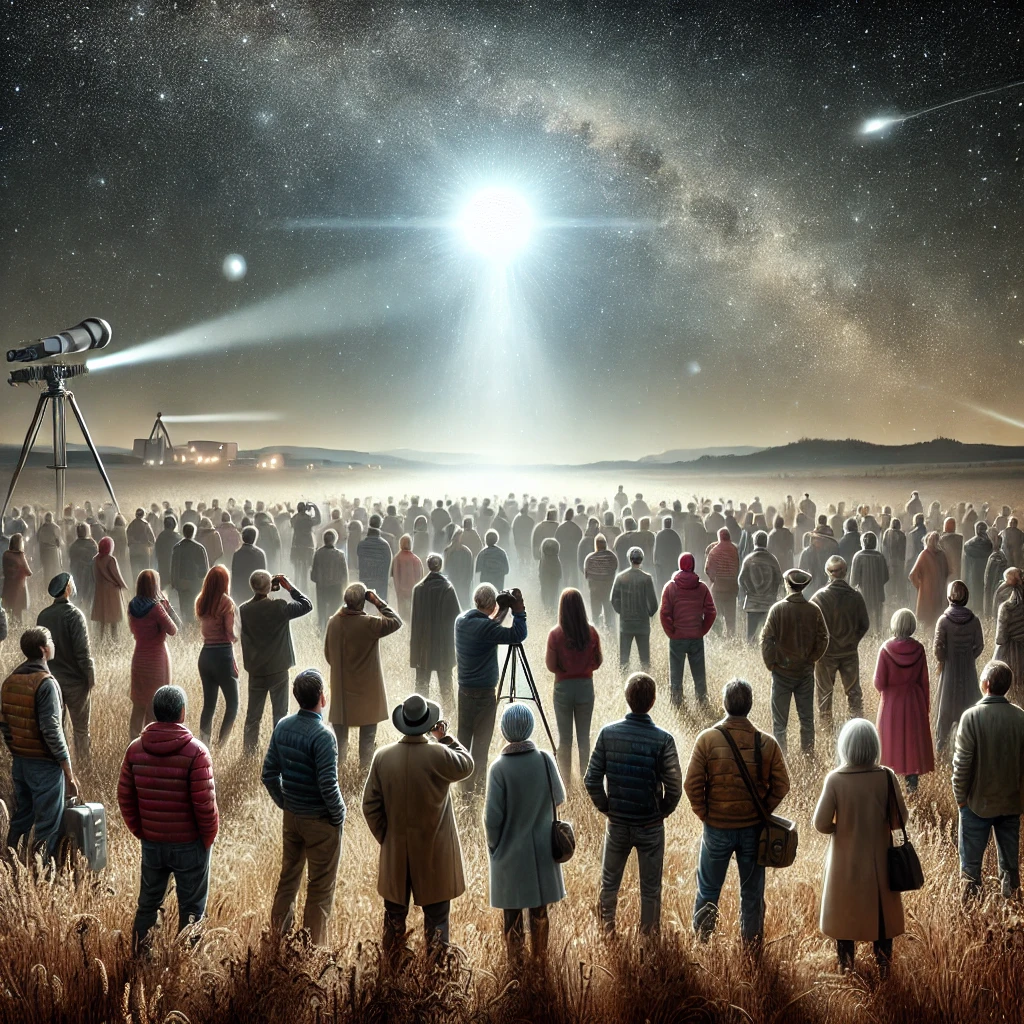A Study on Personality Traits and UFO Sightings

Dr. Daniel Stubbings from Cardiff Metropolitan University, along with his colleagues Sophie Ali and Alexander Wong, conducted a pioneering study titled “Who Sees UFOs? The Relationship Between Unidentified Anomalous Phenomena Sightings and Personality Factors” to examine the relationship between personality traits and sightings of Unidentified Anomalous Phenomena (UAP). Published in the Journal of Scientific Exploration, the study looked into the “big five” personality traits—extraversion, neuroticism, openness, agreeableness, and conscientiousness—as well as schizotypy traits, which are behaviors resembling those found in schizophrenia.
The research included 206 participants, half of whom reported seeing a UAP. Using latent profile analysis, the study identified three distinct personality groups. The first group had average traits, the second group, termed the Neurotic/Schizotypy group, was high in neuroticism and schizotypy traits, and the third group, labeled O-ACE, was high in openness, agreeableness, conscientiousness, and extraversion but low in neuroticism and schizotypy traits. Interestingly, the O-ACE group was more likely to report UAP sightings.
The findings challenged the common stereotype that individuals who see UAPs are emotionally reactive or prone to perceptual and cognitive abnormalities. Instead, it found that personality traits alone are insufficient to explain UAP sightings. The study also highlighted the underreporting of UAP sightings due to stigma and a lack of proper reporting avenues, noting that only 28% of participants reported their sightings to any authority.
Dr. Stubbings emphasized that further research is necessary to explore the nuances of these personality factors and their role in the emergence of both belief and experience. The study concluded that personality profiles are not significant predictors of UAP sightings, suggesting that a diverse array of personality types report these experiences. The research calls for a reduction in stigma surrounding UAP sightings to ensure accurate reporting and understanding of these phenomena.
Jacques Vallée, a prominent figure in UFO research, is known for his insightful and often unconventional perspectives on the phenomenon. One of his notable quotes addresses the issue of underreporting in UFO incidents. Vallée famously said, “The best UFO cases, the most interesting, the most perplexing, are the ones that are never reported.” This sentiment reflects his belief that many significant encounters remain unknown due to witnesses’ reluctance to come forward, often due to fear of ridicule or disbelief from authorities and the public.
The concept of daimonic experiences explores encounters where the lines between internal psychological states and external reality blur, leading to events that challenge conventional understanding. These experiences often manifest as UFO sightings, among other phenomena, and have profound personal impacts. This concept parallels the research by Dr. Daniel Stubbings, which examined personality traits of UAP witnesses, concluding that personality profiles are not significant predictors of UAP sightings, suggesting that a diverse array of personality types report these experiences. Both perspectives highlight the complex interplay between mind and phenomenon in understanding UAP sightings.
In “Entangled Minds: Extrasensory Experiences in a Quantum Reality,” Dean Radin explores the intersection of quantum physics and parapsychological phenomena, suggesting a deep interconnectedness between consciousness and the universe. This concept resonates with Dr. Daniel Stubbings’ research on UAP sightings, which found that personality traits alone do not predict UAP sightings, emphasizing the need to look beyond traditional frameworks to understand extraordinary experiences. Both works propose that our perceptions and consciousness are fundamentally linked to the realities we encounter.
“Mind-Reach: Scientists Look at Psychic Abilities” by Harold Puthoff and Russell Targ looks into the scientific exploration of psychic phenomena such as clairvoyance and telepathy, particularly through the remote viewing program at the Stanford Research Institute. This exploration mirrors Dr. Daniel Stubbings’ research, which highlights that a wide range of personality types, not just specific traits, report UAP sightings. Both efforts underscore the scientific community’s ongoing quest to understand extraordinary human experiences and suggest a deeper interplay between mind and unexplained phenomena.
Dr. Daniel Stubbings’ research fundamentally challenges stereotypes about UAP witnesses by demonstrating that personality traits alone do not significantly predict sightings. The study underscores that a diverse array of personality types report UAP experiences, indicating that these phenomena are not confined to those with certain psychological profiles. Echoing Jacques Vallée’s views on underreporting, the study calls for reducing stigma to improve reporting and understanding of UAPs. This aligns with broader explorations of consciousness and extraordinary experiences, emphasizing the need for inclusive and open-minded scientific inquiry into these phenomena.


